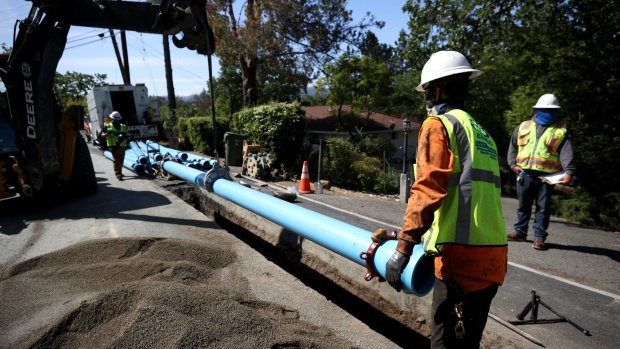Nov 30, 2023
US Lead Water Pipes to be Replaced in 10 Years Under Proposed EPA Rule
, Bloomberg News

(Bloomberg Law) -- The “vast majority” of lead drinking water pipes would need to be replaced within 10 years under proposed Lead and Copper Rule Improvements announced Thursday, a top EPA water official said.
The Environmental Protection Agency’s proposed rule calls for water systems to replace a minimum of 10% of their lead pipes annually with a goal of replacing 100% nationwide within 10 years—a dramatic update to a Trump-era rule that took effect in 2021. The EPA expects to finalize the new rule in 2024.
The Trump rule reduced the number of lead pipes that need to be replaced annually to 3%—down from 7% under the original 1991 lead and copper rule.
Under the new proposal, “if a community can go faster than 10 years, the state can require a community to go faster,” Radhika Fox, EPA’s assistant administrator for the Office of Water, said Wednesday on a call with reporters.
Water systems are currently required to conduct an initial lead pipe inventory by fall 2024. The proposed new rule would require them to regularly update those inventories, create a plan to replace the pipes, and track the materials used to manufacture them.
The proposal calls for lowering the lead action level in drinking water to 10 micrograms per liter from 15 micrograms per liter. That means water utilities would have to notify the public when water samples detect a lead drinking water lead level of 10 micrograms per liter or greater.
Fox said the lowered lead action level will lead to “very significant public health improvements.”
The new level will “compel a significant number of water systems to be taking interim measures like corrosion control even as the focus is on getting those lead pipes out,” she said.
The draft rule also calls for drinking water systems to more frequently communicate with residents about the utility’s plans to replace lead service lines.
The proposed Lead and Copper Rule will be open for a 60-day public comment period once it is published in the Federal Register in the coming days. The EPA will host a public hearing on the proposal on Jan. 16.
The $15 billion for lead service line replacement allocated by Congress in the 2021 infrastructure law will help to fund the pipe replacements mandated by the proposed rule, EPA Administrator Michael Regan said. Funds from the agency’s Drinking Water State Revolving Fund, which provides grants and loans for water system improvements, can also be used, he said.
Public Health Crisis
The EPA estimates that there are more than 9 million lead service lines needing replacement nationwide.
The agency in 2022 issued guidance for lead pipe replacement in a technical document outlining different elements of lead pipe inventories required by the existing Lead and Copper Rule and how cities should plan for conducting their inventories. It describes how water utilities should visually inspect the lines, and update their inventories periodically.
Lead leached into drinking water from water pipes connecting homes to water mains is linked to brain damage in children and other health problems.
It rose to prominence in a public health crisis that occurred after Flint, Mich., in 2014 switched its municipal drinking water source, allowing lead pipes to corrode and contaminate the city’s drinking water.
“This proposed rule, these improvements ensure that in a not-too-distant future there will never be another city and another child poisoned by their pipes,” Mona Hannah-Attisha, a pediatrician in Flint, said on the call with reporters and EPA officials Wednesday.
The Association of Metropolitan Water Agencies said increasing costs, supply chain disruptions, bad record keeping, staff shortages, and other challenges have been barriers to cities seeking to replace lead service lines.
“AMWA urges EPA to focus on providing drinking water systems with the resources and tools necessary to achieve this ambitious goal, and working toward eliminating the real barriers that exist for many utilities,” AMWA CEO Tom Dobbins said in a statement.
To contact the reporter on this story: Bobby Magill at bmagill@bloombergindustry.com
To contact the editor responsible for this story: Zachary Sherwood at zsherwood@bloombergindustry.com
©2023 Bloomberg L.P.


